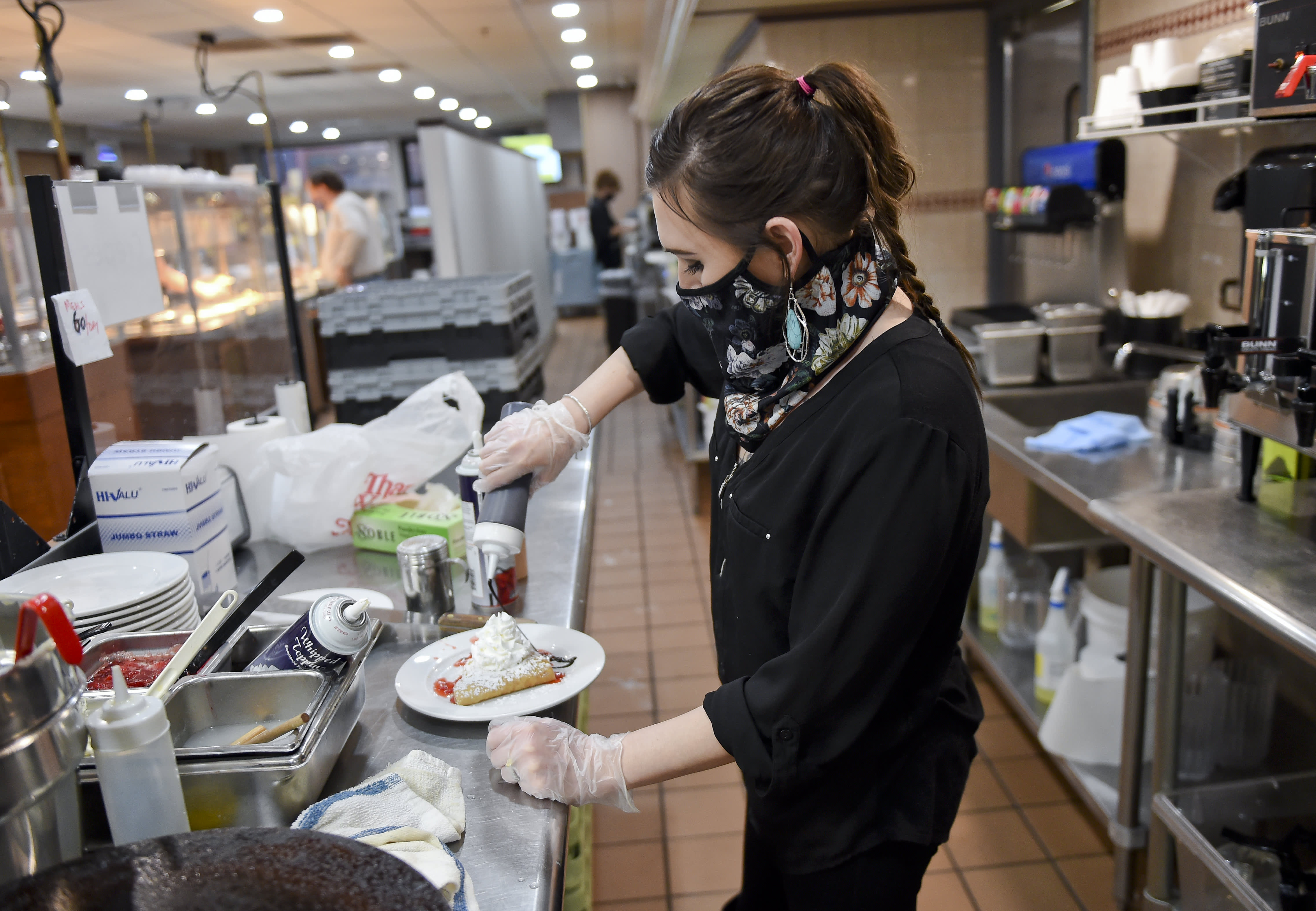Wyomissing Restaurant and Bakery Food Specialist Megan Catarious, prepares a crepe at the crepe bar at the Wyomissing Restaurant and Bakery on Penn Ave in Wyomissing, Pennsylvania, January 22, 2021.
Ben Hasty | MediaNews Group | Reading Eagle via Getty Images
January’s employment picture appears to have improved over December, but how much so depends in big part on the impact of the virus and restrictions on the struggling hospitality and leisure sector.
The U.S. Bureau of Labor Statistics will release its “employment situation” report for January on Friday morning, detailing the unemployment rate, as well as the number of jobs added or lost last month.
Economists expect 50,000 payrolls were added in January, after a decline of 140,000 in December, according to Dow Jones. The unemployment rate is expected to stay at 6.7%.
There has been some improvement in recent jobs-related data, including Thursday’s weekly jobless claims data, showing 779,000 first time filers. While still quite large, it was the lowest since Nov. 28 and below the 830,000 expected by economists.
Economists’ forecasts are in a wide range with some showing declines in total payrolls but others expecting sizeable gains. NatWest economists, for instance, raised their negative forecast to expectations for a gain of 300,000.
“We’re forecasting [an increase of] 200,000. It shows some improvement certainly relative to December, when there was a contraction,” said Michelle Meyer, head of U.S. economics at Bank of America Global Research.
“The swing factor should be leisure and hospitality because that’s where you had the biggest weakening in the December report,” she said.
In December, 498,000 jobs were lost in leisure and hospitality, bringing the total to 3.9 million, or 23% of the sector’s workforce. Of the jobs lost in December, 372,000 were in food services or drinking establishments, which were hurt by Covid restrictions and the impact of cold weather on outdoor dining.
“We do think there was some improved activity in January around consumer spending,” said Meyer of Bank of America. “We also did see some stimulus kick in…There was a big boost in card spending in the first week of January because of stimulus.”
The trend showed up in Bank of America card data, she said. Data from the bank’s total credit cards and debit cards showed spending in January increased through Jan. 29 at a pace of about 5.3%.
In the week ended Jan. 16, spending was up 6% year-over-year. For stimulus recipients, it was up 12.7%.
The $600 Covid relief payments were sent to individuals in early January, as part of the last $900 billion stimulus package approved by Congress.
The boost in spending correlates directly with jobs growth, Meyer said.
Less optimism among some
Other economists are less optimistic on the job gains last month.
Michael Gapen, chief U.S. economist at Barclays, said he expects a negative 100,000 payrolls.
The number could be better, he said. However, Gapen does not see as much rebound in leisure and hospitality after the big December decline.
“I think the consensus says it’s a one-off,” he said. “We were kind of thinking there would be more persistence to the weakness in leisure and hospitality.”
But economists agree the goods part of the economy should continue to gain, with manufacturing potentially adding jobs.
“I suspect labor market momentum will pick up in coming months. I think the overall the message from January is going to be no real incremental improvement in the labor market in January,” said Gapen. “We’ve got 10 million more jobs to recover. Averaging 200,000 a month is not going to get that done. We need to do more than that.”
The labor market, like the economy, depends on the course of the virus and the vaccine rollout.
Meyer said she is optimistic for growth this year and expects another stimulus package of $1 trillion. President Joe Biden has proposed $1.9 trillion, but it is expected to be whittled down.
“We’re pretty positive on economic growth,” said Meyer. “We’re forecasting 6% GDP growth this year. That does include an assumption for additional stimulus in spring.”
